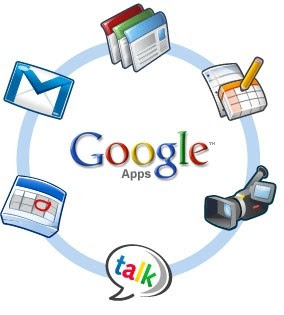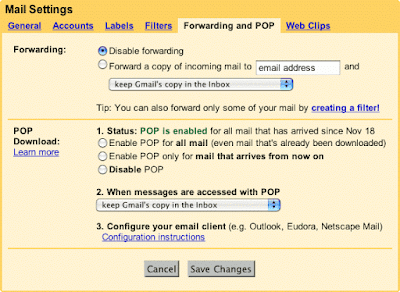We’ve all had those students in our classroom that we just couldn’t get motivated for all the effort we tried. Whether it was using a rewards system with lots of extrinsic motivation, short of literally going and picking the student up from home and bringing them to school, it seemed like everything we did failed to produced long-term results. One school where I worked paid the students $25.00 per month for perfect attendance. The students clearly learned you go to school, no matter if you learn anything or not, you get paid. The reward system clearly didn’t work, and students were no more motivated by extrinsic means than they were when they began school. In fact, they may have been less motivated. So how do we tap into a students’ own intrinsic motivation? How do we kick start it if extrinsic motivation doesn’t work? This is where the constructivist in me shows itself. I believe that technology can and will aid in tapping into a students’ intrinsic motivation by engaging their creativity.
Recently, I had the good fortune of getting a pre-released copy of Daniel Pink’s new book,
Drive: The Surprising Truth about What Motivates Us, which is coming out in January. Although this book was written for corporate America in mind, there are some tremendous applications for students and teachers. But the research is really solid and supports my premise that extrinsic motivation does not work. Prior to reading this book, I could tell you qualitatively from my experience that motivation is something that a person possesses for them self. I cannot force a student to be motivated to do something. Motivation seems to have to come from a person’s own volition. If I force a person to do something, it’s not their motivation that is responding. It may be fear or compliance, but the moment I withdraw the external pressure, that person will in all probability cease to do what they were doing. The same goes for using rewards on students. The reward becomes a form of bribery that replaces the intrinsic motivation of doing a task for the sake of the task itself or from the mere pleasure from accomplishing the task. We’ve probably all heard the frustrated parent in the shopping centre telling the screaming child that if they stop crying they would get an ice cream later. It worked for the moment, but the child was no closer to not putting up a fuss in the future. In fact, they only came to expect something extra in subsequent outings. We see this example and say we would never do this, but whenever posed with the similar situation or a classroom with students crawling up the walls, we are tempted to try these tactics, because they produce short-term results. But this does not mean we have tapped into the intrinsic motivation of the student and helped them on the road to learning.
Schools and the corporate world has been dangling carrots and sticks in front of students and workers for years with the hope that it would “improve performance, increase productivity, and encourage excellence” by rewarding the good and punishing the bad (Pink, 2009, p. 17). Despite the evidence that in most cases it doesn’t produce lasting, real results, our schools keep doing it right along with the corporate world. No Child Left Behind is perfect example of placing huge pressure on schools to produce results through strict compliance to standards for accountability purposes, yet our student results show little or no evidence of improvement, because we have not tapped into the intrinsic motivation of the child.
Pink shares some fascinating research in 1969 where individuals were placed into two groups: one group received a reward, the other received no reward. Each group was given puzzle pieces and asked to construct according to the drawings provided showing three configurations. The group that received the reward was told they would be paid for each successful puzzle, while the other group was simply asked to construct the puzzles. Both were given a time limit of eight minutes. The researchers were testing the hypothesis; Give me a reward, and I’ll work harder. What surprised them was that over a period of time, the group that received the payment actually took longer to perform the task than the group that received no payment. The researchers were surprised to learn that the reward actually had a negative impact on the subjects. What it did tell them was the individuals who received no payment drew from a greater sense of innate creativity and drive for facing and exploring a challenge (Pink, 2009, pp. 5-8). Further research has since been done with different variations with similar results. When people are rewarded for their performance, they are less creative and even more stressed to accomplish the task. Even more importantly, when the rewards are taken away, an apathy set in where the individuals had little or no motivation to do the work or task given. Pink goes on to say that after 128 experiments in 1999, the conclusion was that “tangible rewards tend to have a substantially negative effect on intrinsic motivation (2009, p.35).” Furthermore, when the “focus is short-term and opts for controlling people’s behaviour, (2009, p.35) there is long-term damage.
What does this mean for students and schools? We need to be careful not to use extrinsic motivation in drawing out our students to learn. In fact, research seems to show us that we need to really tap into our students intrinsic motivation, which according to Pink is “the drive to do something because it is interesting, challenging, and absorbing, which is essential for high levels of creativity (2009, P. 43).” Our students need to be challenged, but not necessarily from a perspective that they comply by doing a prescribed task that we have given them. Instead, we need to engage our students in the learning process by getting them to exercise their creativity. Often times, this means that it is less teacher directed, and more student initiated or determined. Self-determination theory (SDT) suggests that intrinsic motivation loves to learn and know, and accomplish things, and experience stimulation that produces mastery in particular subject areas (Peterson & Seligman, 2004, pp. 165-166). Further to this, Pink says that “human beings have an innate drive to be autonomous, self-determined, and connected to each other. And when this drive is liberated, people achieve more and live richer lives (2009, p. 67).” From a constructivist perspective that embraces SDT, we need to be conscientious and aware that students, deep inside their brain and under what may appear as apathy, is a love for learning, but it needs to be fostered and encourage in the right environment. As teachers, we need to create a safe place to learn that promotes the positive.
Students have been confined to performing limiting tasks in schools that restrict their creativity. For years, they have been assigned the standard paragraph or essay writing exercise that when given the choice to do something different, they often resort back to what they are familiar with and find less risky. This needs to change for our students. If we are going to see our students intrinsically motivated about learning and better prepared for the workplace, we need to let them express themselves creatively. They need to be able to do so with some freedom. Times are changing. The workplace is demanding that individuals be able to think more creatively. Pink states that during the 20
th Century, most work was algorithmic, which was very organized, prescribed, and layered in what was to be done. This approach is very much dependent on extrinsic motivation. However, in the 21
st Century, more workplaces are encouraging a heuristic focus that allows for more freedom and interpretation and does not respond very well to extrinsic motivation (2009, pp. 25-26). Think about the implications for our students. We need to do less algorithmic work with them such as memorization and following a textbook and allow more interpretation and self discovery from our students.
This is where the technology comes into play. Think of the potential for students when given choice to create freely as an expression of themselves, how liberating and self-motivating this can be. Imagine with me the potential of connecting with a student on a level of engagement that has brain synapses firing wildly because of the learning and stimulation that is taking place. Sadly, most classrooms do not connect on this level, but they really need to for the sake of the students. There are a number of ways that this can be accomplished. Let us take a standard piece of literature for example, Hamlet. A typical approach to this Shakespearean play is to read the individual acts and complete review questions. Sometimes there is some class discussion about themes and the language used. An essay is assigned to discuss the role of the protagonist and antagonist in the play. At the end, everyone sits in their seats watching the Mel Gibson version of Hamlet on DVD. Students fumble through the play wondering how this is going to help them be better prepared for post-secondary education or the workplace. Yet, the play is rich in themes that relate to everyday life, but rarely do we see the creative expressions of students touch on these themes. Instead of giving students the prescribed lists of questions, we need to give students choices using technology to express themselves. Maybe one of the choices is to create a short digital video using Lego to re-enact a key scene. This is no small feat reconstructing a scene with Lego, but it comes with a challenge. For example:
http://www.youtube.com/watch?v=z-HW8xk0N3g Maybe it’s not Lego, but modeling clay, or sticks, or digitally created figurines. Even this needs to be a choice for the students. The teacher may need to brainstorm with the students about ideas. Maybe they use PhotoStory made up with still shots that are put together. Students could use Animoto to make a music video version of a scene like
http://www.youtube.com/watch?v=T_xPPrTkV30 . Once the students have finished their project, they can post them on a Wikispace and review each other’s digital short movies like this site,
http://hamletremixed.wikispaces.com/ . The main purpose of this is not to create a fun assignment, but something challenging, rewarding, and fulfilling. The students need to think about what they are contributing to the world at large with a project such as theirs. How are they helping others? What can they share in their creative product that teaches others about themselves? There needs to be meaning attached to what the students do that adds to the creativity.
Technology is simply the tool that facilitates and broadens the students understanding and learning and self-expression. As educators, we need to embrace technology. The opportunities are limitless for students with technology. It gives them the opportunity to connect with other students around the world and collaborate on projects using Ning or some other Web 2.0 tool. Pink in quoting Mihalyi Csikszentmihalyi, says, “creativity generally involves crossing the boundaries of domains (2006, p. 135).” Using technology in the classroom can definitely be a matter of crossing domains. Moving out of the traditional modality of using pen and paper to embracing technology in teaching can be a challenge. Often we used paper, such as worksheets, as a means of classroom control. Using technology to have the students write their papers on Microsoft Word just to replace paper isn’t necessarily crossing domains or being creative. We’re talking about really letting ourselves as teachers explore technology as a creative exercise for ourselves first, so that we can help the students get there. There’s no sense trying to lead students in using technology to tap into their intrinsic motivation, if we as educators are not prepared to go there. If we want students to engage in learning, then we as educators need to engage as well. Engagement leads to mastery, which is self-satisfying. This is what Csikszentmihalyi calls, ““autotelic experiences”, where the goal is self-fulfilling, and the activity is its own reward (Pink, 2009, p. 104).” As educators, we need to really encourage our students in embracing the creative dimension of their being. But how can we do this, if we are not prepared to embrace it for ourselves.
As much as technology can be a hurdle for everyone, we need to come up with fewer excuses and take on the challenge. Technology can allow students creativity to flow that further motivates them to pursue new challenges. The possibilities are limitless.
References:
Peterson, C, & Seligman, M. (2004).
Character Strengths & Virtues: A Handbook and Classification. New York: Oxford University Press.
Pink, Daniel. (2006). A Whole New Mind: Why Right-Brainers will Rule the Future. Riverhead Books. New York, New York.
Pink, Daniel. (2009). Drive: The Surprising Truth about What Motivates Us. Riverhead Books. New York, New York.
Nelso2004. (2008, January 13)
Lego Hamlet. Retrieved December 4, 2009 from
http://www.youtube.com/watch?v=z-HW8xk0N3gPray4peace4ever. (2009, November, 08) William Shakespeare: Animoto Video. Retrieved December 4, 2009 from http://www.youtube.com/watch?v=T_xPPrTkV30











